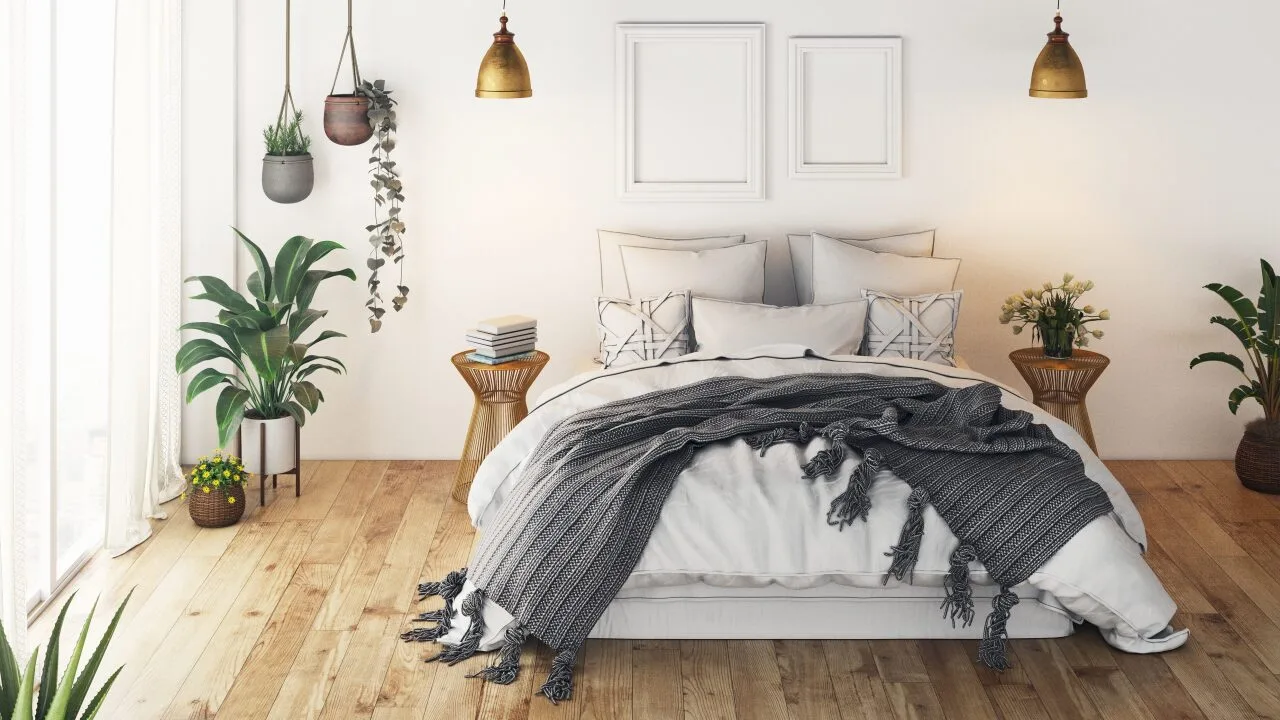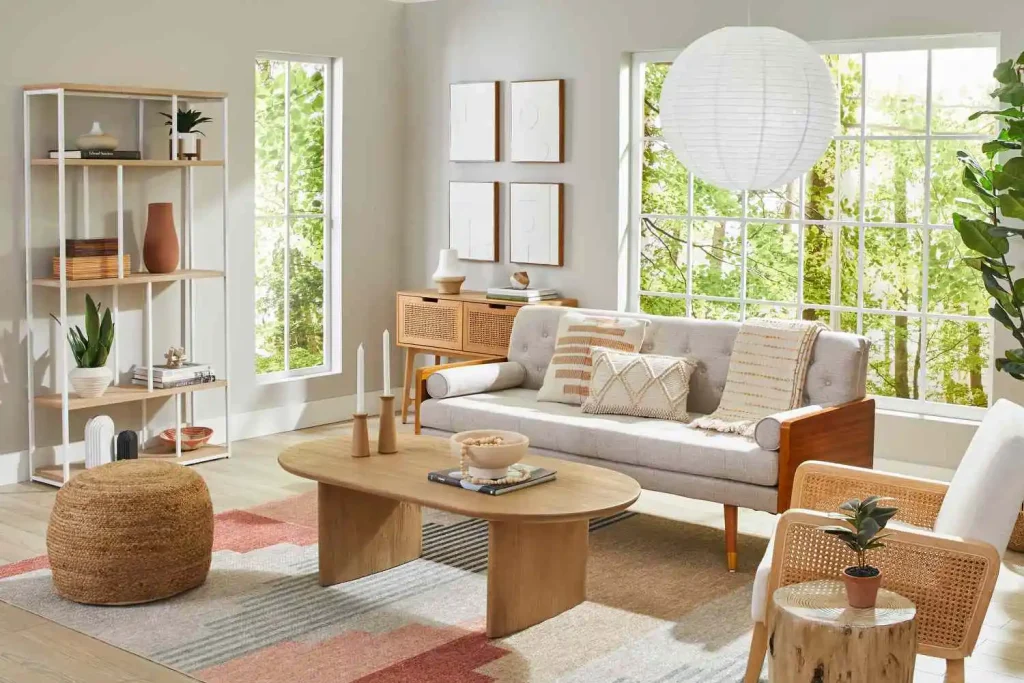How to Create a Relaxing Bedroom Retreat: An Ultimate Guide
A bedroom should be more than just a place to sleep; it should be a personal sanctuary where you can unwind, relax, and rejuvenate. Creating a relaxing bedroom retreat involves careful consideration of design, functionality, and ambiance. In this comprehensive guide, we will explore how to create a relaxing bedroom retreat and transform it into a serene haven through thoughtful design choices, calming decor, and practical tips.
1. Understanding the Importance of a Relaxing Bedroom
The Role of a Bedroom in Well-being
A relaxing bedroom is essential for overall well-being. It’s not just a place for rest; it’s where you start and end your day. A well-designed bedroom can enhance your sleep quality, reduce stress, and improve your mood. According to various studies, a calming environment contributes significantly to better sleep, which in turn affects your physical health and mental clarity.
The Impact of Design on Relaxation
Design elements such as color, lighting, and texture play a crucial role in creating a calming environment. These elements should work together to promote relaxation and comfort. From the choice of furniture to the arrangement of accessories, every detail matters in crafting a retreat that helps you unwind and rejuvenate.
2. Designing Your Bedroom Layout
Assessing Your Space
Before diving into design choices, assess your bedroom’s layout and size. Measure the dimensions of the room, including the placement of doors, windows, and built-in furniture. Understanding your space will help you make informed decisions about furniture placement and overall design.
Furniture Arrangement
Bed Placement: The bed is the focal point of the bedroom. Position it where you feel most comfortable and where it enhances the room’s flow. Consider placing the bed against the longest wall or under a window if it provides a better view.
Other Furniture: Arrange other furniture such as dressers, nightstands, and chairs in a way that allows easy movement and functionality. Ensure that there is enough space around the bed for walking and that the furniture complements the room’s proportions.
Storage Solutions: Incorporate practical storage solutions to keep the bedroom clutter-free. Use under-bed storage, built-in closets, or stylish baskets to organize your belongings while maintaining a clean, tranquil space.
3. Choosing a Calming Color Palette
The Psychology of Color
Colors significantly affect mood and emotions. For a relaxing bedroom retreat, choose colors that promote calmness and tranquility. Soft, muted tones are ideal for creating a serene atmosphere.
Neutral Colors: Shades like beige, taupe, and gray create a soothing environment. They provide a neutral backdrop that can be easily complemented with other colors and textures.
Cool Colors: Blues, greens, and lavenders are known for their calming effects. They can help reduce stress and create a serene environment.
Warm Colors: Soft warm colors like soft pinks and gentle yellows can create a cozy and inviting atmosphere, though they should be used sparingly to avoid overstimulation.
Incorporating Accents
While a neutral or cool color palette forms the base, you can introduce accents in various shades to add depth and interest. Use these accents in textiles, artwork, and decorative items to enhance the overall design without overwhelming the space.
4. Selecting Comfortable and Functional Furniture
Choosing the Right Bed
Mattress: Invest in a high-quality mattress that suits your sleeping preferences. Consider factors like firmness, material, and support. A comfortable mattress is crucial for restful sleep and overall comfort.
Bed Frame: Choose a bed frame that complements your bedroom’s style and provides adequate support. Options include platform beds, sleigh beds, and upholstered frames.
Bedding: Opt for soft, breathable fabrics for bedding. Cotton, linen, and bamboo are excellent choices for their comfort and durability. Layer your bed with plush pillows and cozy throws to enhance comfort.
Additional Furniture
Nightstands: Select nightstands that provide both functionality and style. They should be at a convenient height and offer storage for essentials like lamps, alarm clocks, and books.
Seating: Incorporate seating options such as a reading chair or a bench at the foot of the bed. This adds functionality and comfort to the space.
Storage: Consider furniture pieces that offer hidden storage or dual functions, such as storage ottomans or dressers with ample drawer space.
5. Lighting for Relaxation
Layering Light
Effective lighting is essential for creating a relaxing atmosphere. Layering light sources allows you to adjust the ambiance according to your needs.
Ambient Lighting: This is the general lighting that illuminates the entire room. Ceiling fixtures, recessed lights, or pendant lights can provide ample light for everyday activities.
Task Lighting: Task lighting focuses on specific areas where you need additional light, such as reading or dressing. Table lamps, wall sconces, or adjustable reading lights work well for this purpose.
Accent Lighting: Accent lighting adds warmth and ambiance to the room. Use soft, dimmable lights or LED strips to highlight architectural features, artwork, or decorative elements.
Creating a Soothing Glow
For a truly relaxing environment, incorporate lighting that can be adjusted to create a soothing glow. Consider using dimmer switches, smart bulbs, or candles to control the lighting intensity and create a tranquil ambiance.
6. Textures and Fabrics for Comfort
Choosing Soft Textures
Textures play a significant role in adding comfort and coziness to your bedroom. Incorporate a variety of soft textures to create a layered, inviting environment.
Bedding: Choose bedding made from soft, breathable fabrics like cotton, linen, or flannel. Layer with textured throws and decorative pillows for added comfort.
Rugs: Add a plush rug under the bed or in a seating area to provide warmth and softness underfoot. Choose materials like wool, cotton, or shag for a cozy feel.
Curtains: Opt for curtains made from soft fabrics that provide privacy and light control. Choose colors and patterns that complement the room’s overall design.
Incorporating Natural Materials
Incorporate natural materials to create a sense of serenity and connection with nature. Wooden furniture, rattan baskets, and stone accents can add warmth and texture to the room.
7. Enhancing the Ambiance with Accessories
Adding Personal Touches
Personal touches make a bedroom feel uniquely yours. Incorporate items that reflect your personality and preferences.
Artwork: Hang artwork that resonates with you and adds visual interest to the space. Choose pieces that complement the room’s color palette and style.
Decorative Items: Use decorative items like vases, candles, and picture frames to add character and charm. Arrange these items thoughtfully to avoid clutter and maintain a clean, serene look.
Incorporating Plants
Plants can enhance the ambiance of a bedroom by adding freshness and vitality. Choose low-maintenance plants like succulents, snake plants, or peace lilies that thrive in indoor conditions.
8. Creating a Relaxing Atmosphere
Reducing Clutter
A clutter-free bedroom promotes relaxation and calmness. Keep surfaces clear and use storage solutions to organize belongings. Regularly declutter to maintain a serene environment.
Incorporating Aromatherapy
Aromatherapy can enhance relaxation and improve sleep quality. Use essential oil diffusers, scented candles, or aromatherapy pillows to introduce calming scents like lavender, chamomile, or sandalwood.
Implementing Soundproofing
Consider soundproofing techniques to create a quieter, more peaceful environment. Use heavy curtains, rugs, or acoustic panels to reduce external noise and improve overall tranquility.
9. Practical Tips for Maintaining Your Retreat
Regular Maintenance
Regular maintenance ensures your bedroom remains a relaxing retreat. Clean and organize the space regularly, and address any issues such as worn-out bedding or broken furniture.
Seasonal Updates
Update your bedroom decor seasonally to keep the space fresh and inviting. Swap out heavy blankets for lighter ones in the spring and add cozy throws in the winter.
Personal Well-being
Incorporate habits that promote personal well-being, such as practicing relaxation techniques, maintaining a consistent sleep schedule, and engaging in calming activities before bedtime.
10. Room-by-Room Examples
Master Bedroom
For a master bedroom, focus on creating a luxurious and spacious retreat. Incorporate a large, comfortable bed with high-quality bedding, and add seating options for relaxation. Use a calming color palette and incorporate soft textures and personalized decor.
Guest Bedroom
In a guest bedroom, aim for comfort and functionality. Provide a comfortable bed with fresh, inviting bedding and essential amenities like bedside tables and lighting. Use a neutral color palette and add thoughtful touches like local artwork or fresh flowers.
Children’s Bedroom
Create a relaxing and functional space for children by incorporating playful patterns and colors that promote a sense of security and comfort. Include practical storage solutions for toys and books, and ensure the room is safe and welcoming.
Conclusion
Creating a relaxing bedroom retreat involves thoughtful planning and attention to detail. From choosing the right colors and textures to incorporating personal touches and practical elements, every decision contributes to the overall ambiance of the space. By following the principles and tips outlined in this guide, you can transform your bedroom into a serene haven where you can unwind and rejuvenate.
Remember, the key to a successful bedroom retreat is to create a space that reflects your personal style and promotes relaxation. Experiment with different design elements, trust your instincts, and enjoy the process of creating a sanctuary that will enhance your well-being and provide comfort for years to come.

